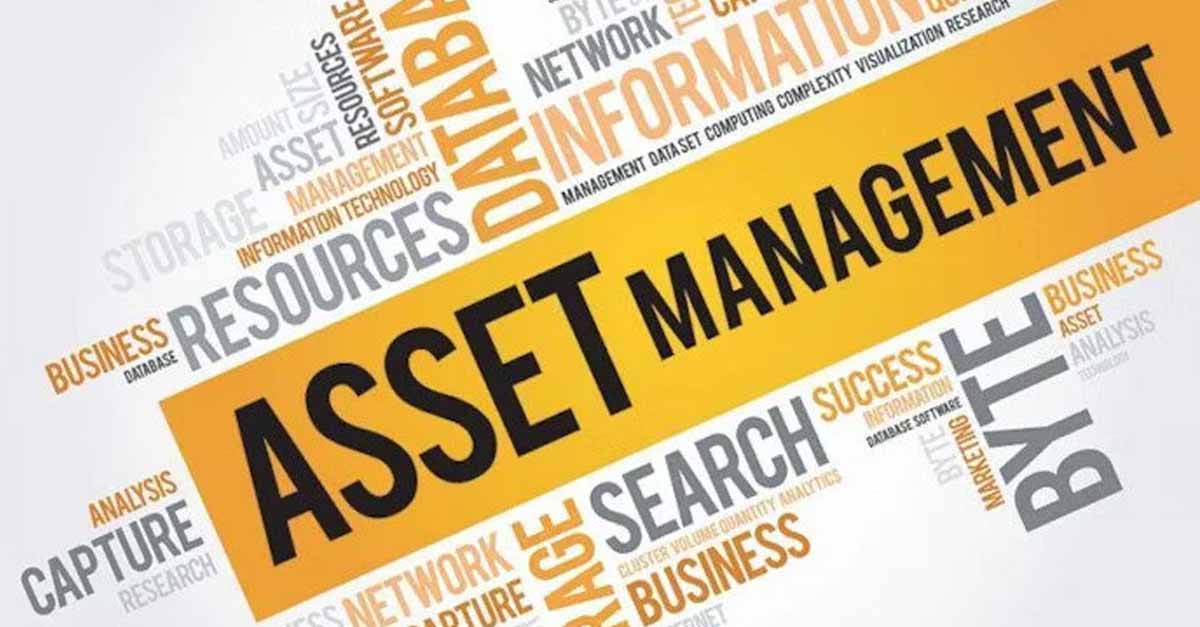
What to Consider When Choosing an Enterprise Asset Management Solution
Explore how an enterprise management solution can benefit your organization and learn how to optimize it for your organization’s needs.
Solutions
Workplace Management Solutions
Real Estate Management Solutions
Maintenance Management Solutions
Energy Management Solutions
Engineering Document Management Solutions
Asset Management Solutions
Automate campus scheduling for classes, meetings, and exams with our EMS software.
Plan and manage conferences effortlessly with EMS software to impress guests and streamline operations.
Boost workplace flexibility and maximize space use with seamless desk and room booking.
Organize workplace or campus events smoothly, creating memorable experiences.
Optimize workspace, manage allocations efficiently, and reduce costs with our space management solutions.
Deliver projects on time and within budget by improving communication, collaboration, and efficiency with our software.
Streamline lease accounting for ASC 842, IFRS, and GASB compliance.
Manage leases efficiently by tracking key dates, analyzing costs, and ensuring compliance.
Centralize data and analytics for better insights, faster negotiations, and revenue growth.
Centralize facility and asset maintenance, automate work orders, and ensure compliance with our CMMS software.
Extend asset life, reduce downtime, and prevent costly repairs with data-driven monitoring.
Prevent equipment failures and extend asset life by detecting and addressing issues early.
Make sustainable, cost-efficient energy decisions by monitoring and optimizing power consumption.
Remotely monitor and control equipment with real-time data to predict issues, boost efficiency, and reduce downtime.
Easily share and collaborate on documents, creating a single source of truth for engineers and contractors.
Manage and analyze assets across their lifecycle to schedule maintenance, reduce downtime, and extend lifespan.
Improve visibility, automate work orders, and ensure compliance for efficient facility and asset management.
Resources
Browse our full library of resources all in one place, including webinars, whitepapers, podcast episodes, and more.
Support
Looking for access to technical support, best practices, helpful videos, or training tools? You’ve come to the right place.
About Accruent
Get the latest information on Accruent, our solutions, events, and the company at large.

Learn more about the latest cybersecurity challenges that food and beverage companies face post-COVID and what you can do to protect your organization.
During the COVID-19 pandemic, the food and beverage industry experienced a significant shift towards digitalization, placing an increased reliance on technology and online platforms. This shift has been more aggressive than that of other industries, as organizations had to evolve quickly to not only overcome COVID disruptions but to meet rapidly growing demand and changing consumer needs and preferences.
While digital technologies have helped food and beverage organizations overcome operational challenges and enhance the customer experience, they have also introduced a host of new challenges. Arguably, the most significant of these challenges has been the exposure to new cybersecurity risks and threats – vulnerabilities that can compromise customer data, disrupt operations, and instantly erode a brand’s reputation.
In this article, we will highlight some of the vulnerabilities that have emerged, explore the potential risks of these vulnerabilities, and discuss what you can do to protect your customers and organization.
Since the early days of the pandemic, the Federal Bureau of Investigation (FBI) has issued several notices alerting the food industry that criminals are increasingly targeting organizations in the sector. This is largely due to the industry being among critical infrastructure and as the FBI points out, cybercriminals aim to exploit vulnerabilities in “a sector that is increasingly reliant on smart technologies, industrial control systems, and internet-based automation systems.”
While there are many different types of cyber threats, the most common fall into three categories: data breaches, ransomware attacks, and phishing attacks.
A data breach is a security incident that results in unauthorized access to confidential information. With more and more customer data stored online, food and beverage organizations have become prime targets for cybercriminals seeking to exploit security vulnerabilities. Moreover, organizations that work with external vendors are constantly sharing files. A single wrong click can lead to the release of highly sensitive information such as customer data or financial information.
The consequences of a data breach can be catastrophic. According to experts, the average cost of a data breach in 2023 is a staggering $4.45 million. But beyond that, data breaches can lead to irreparable damage to a brand, the erosion of customer trust, and potential regulatory actions.
Between 2018 and May 2023, there have been 157 confirmed ransomware attacks on the food, beverage, and agriculture industries. These attacks resulted in the breach of nearly 700,000 individual records and cost the global economy $1.36 billion in downtime alone.
Cybercriminals target a broad range of entities in the industry. They target large organizations based on their perceived ability to pay higher ransom demands. Smaller businesses are viewed as easier targets, particularly those with new or less sophisticated security measures. In a typical ransomware attack, the victims’ files are encrypted and locked. The attacker demands a payment in exchange for decrypting the files. In some cases, the attackers may also copy the files and threaten to release the information in exchange for larger payments.
One of the most highly publicized cases involving a ransomware attack occurred in 2021, targeting JBS – the world’s largest meat processing company. The attack shut down portions of the company’s operations in Australia, Canada, and the U.S. for one day. After consulting with IT professionals and third-party cybersecurity experts, JBS agreed to pay an $11 million ransom to end the attack given the sophisticated means used.
Most of us have been the target of a phishing scheme, whether we realize it or not. In a phishing attack, the cybercriminal aims to trick the victim into divulging information or downloading harmful files like malware. The scheme often involves the use of a fake message such as an email or text, that appears to be from a legitimate source. The victim then interacts with the message believing it to be real.
For example, suppose an employee made a purchase using a business credit card. The cybercriminal learns of the purchase and sends a fake email to the victim. The message states that the victim’s credit card information may have been compromised and requests that the victim confirm the information to protect his or her account. When the victim inputs the information, the cybercriminal can now use the victim’s credit card account to make fraudulent purchases or even sell the information to a third party.
Given the increased frequency and sophistication of cyber threats against food and beverage organizations and the potentially devastating consequences of an attack, it is crucial to implement robust security measures. Some common cybersecurity measures include secure payment gateways, conducting regular software and system updates, and offering ongoing employee training.
Secure payment gateways are PCI-compliant tools that have built-in security measures to encrypt, tokenize, and ultimately protect cardholder information. This makes payment information less vulnerable to cyberattacks and ensures that sensitive data is kept secure.
Providers regularly update software and systems to address bugs and vulnerabilities, as well as implement security measures to stay ahead of evolving threats. Patches and updates should be installed as soon as they are available to ensure that your digital infrastructure is secure.
Employees serve as frontline defenders against cyber threats. Make sure to train staff on the best practices for online security, how to recognize threats like phishing attempts, the measures that the organization has in place to protect sensitive information, and what obligations they have to protect data under applicable laws and regulations such as the General Data Protection Regulation (GDPR).
Regulatory compliance involves adhering to applicable laws and industry-specific regulations and standards. In the food and beverage industry, compliance with standards such as the Payment Card Industry Data Security Standard (PCI DSS) and privacy regulations like the General Data Protection Regulation (GDPR) helps ensure that organizations take adequate measures to protect sensitive data.
Moreover, international standards such as ISO 27001 provide a proven framework upon which food and beverage organizations can establish and implement data protection processes and procedures. Complying with these standards not only helps in mitigating risks but also builds a foundation of trust with customers.
Accruent is a leading provider of robust solutions that help food and beverage organizations maximize equipment effectiveness, improve processes, achieve compliance, and safeguard sensitive data. Maintenance Connection is a best-in-class CMMS solution that helps food and beverage organizations streamline maintenance tasks and maximize asset performance.
Meridian offers centralized document management, allowing F&B organizations to maintain a secure repository for important documents, such as specifications, safety plans, and standard operating procedures. Moreover, the solution establishes an audit trail and helps organizations to achieve regulatory compliance.
Want to discover more about how Maintenance Connection and Meridian can help your organization safeguard your data and systems? Visit the Maintenance Connection and Meridian product pages to learn more. For more information and to request a demo, get in touch via our website.
Explore how an enterprise management solution can benefit your organization and learn how to optimize it for your organization’s needs.
Explore the key performance indicators to track to ensure your management software is increasing your organization’s productivity.
Explore how Energy Demand Response programs can help your organization identify energy consumption trends and allow your organization to address it ...
Subscribe to stay up to date with our latest news, resources and best practices.
* To unsubscribe at any time, please use the “Unsubscribe” link included in the footer of our emails.